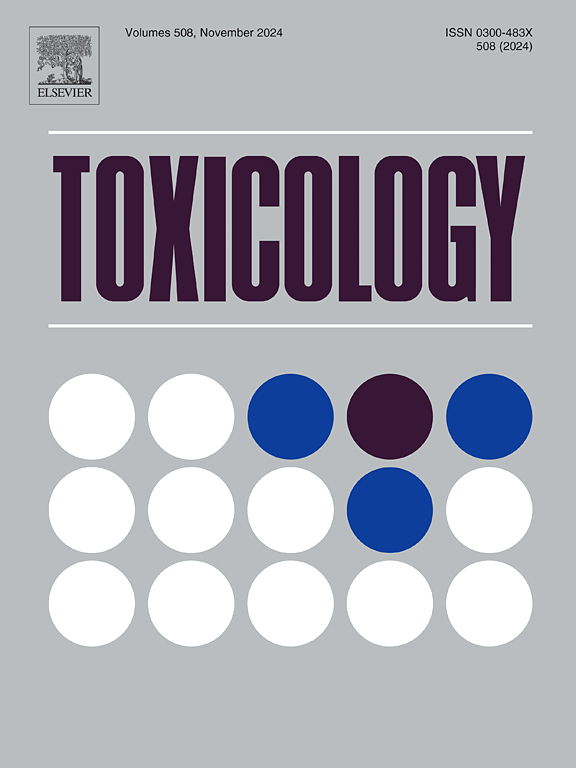Investigating the functional role of BUB1B in aflatoxin B1-associated hepatocarcinogenesis
IF 4.8
3区 医学
Q1 PHARMACOLOGY & PHARMACY
引用次数: 0
Abstract
Hepatocellular carcinoma (HCC) is a leading cause of cancer-related mortality worldwide, stemming from a complex interplay of genetic, environmental, and lifestyle factors. Aflatoxin B1 (AFB1), a prevalent food contaminant, is a known HCC risk factor, but its molecular mechanisms remain incompletely understood. This study investigated the contribution of BUB1B, a crucial spindle assembly checkpoint regulator, in AFB1-induced hepatocyte malignant transformation, we assessed AFB1's impact on cell proliferation, viability, cell cycle regulation, and BUB1B expression. BUB1B knockdown via siRNA revealed its role in epithelial-mesenchymal transition (EMT), cell motility, and proliferation. AFB1 exposure significantly altered cell proliferation and cell cycle dynamics, correlating with increased BUB1B expression. Furthermore, we identified a significant interaction between BUB1B and the IL12A-JAK2/STAT4 signaling pathway, suggesting a mechanism for immune evasion and tumor progression. These findings highlight BUB1B's critical role in AFB1-induced hepatocarcinogenesis and establish its potential target for HCC. Further research is needed to fully elucidate the underlying molecular mechanisms and explore the therapeutic implications of BUB1B inhibition in HCC treatment.
探讨BUB1B在黄曲霉毒素b1相关肝癌发生中的功能作用
肝细胞癌(HCC)是全球癌症相关死亡的主要原因,源于遗传、环境和生活方式因素的复杂相互作用。黄曲霉毒素B1 (AFB1)是一种常见的食品污染物,是已知的HCC危险因素,但其分子机制仍不完全清楚。本研究调查了BUB1B在AFB1诱导的肝细胞恶性转化中的作用,我们评估了AFB1对细胞增殖、活力、细胞周期调节和BUB1B表达的影响。通过siRNA敲低BUB1B揭示了其在上皮-间质转化(EMT)、细胞运动和增殖中的作用。AFB1暴露显著改变细胞增殖和细胞周期动力学,与BUB1B表达增加相关。此外,我们发现BUB1B与IL12A-JAK2/STAT4信号通路之间存在显著的相互作用,提示免疫逃避和肿瘤进展的机制。这些发现强调了BUB1B在afb1诱导的肝癌发生中的关键作用,并确定了其潜在的HCC靶点。需要进一步的研究来充分阐明其潜在的分子机制,并探索BUB1B抑制在HCC治疗中的治疗意义。
本文章由计算机程序翻译,如有差异,请以英文原文为准。
求助全文
约1分钟内获得全文
求助全文
来源期刊

Toxicology
医学-毒理学
CiteScore
7.80
自引率
4.40%
发文量
222
审稿时长
23 days
期刊介绍:
Toxicology is an international, peer-reviewed journal that publishes only the highest quality original scientific research and critical reviews describing hypothesis-based investigations into mechanisms of toxicity associated with exposures to xenobiotic chemicals, particularly as it relates to human health. In this respect "mechanisms" is defined on both the macro (e.g. physiological, biological, kinetic, species, sex, etc.) and molecular (genomic, transcriptomic, metabolic, etc.) scale. Emphasis is placed on findings that identify novel hazards and that can be extrapolated to exposures and mechanisms that are relevant to estimating human risk. Toxicology also publishes brief communications, personal commentaries and opinion articles, as well as concise expert reviews on contemporary topics. All research and review articles published in Toxicology are subject to rigorous peer review. Authors are asked to contact the Editor-in-Chief prior to submitting review articles or commentaries for consideration for publication in Toxicology.
 求助内容:
求助内容: 应助结果提醒方式:
应助结果提醒方式:


